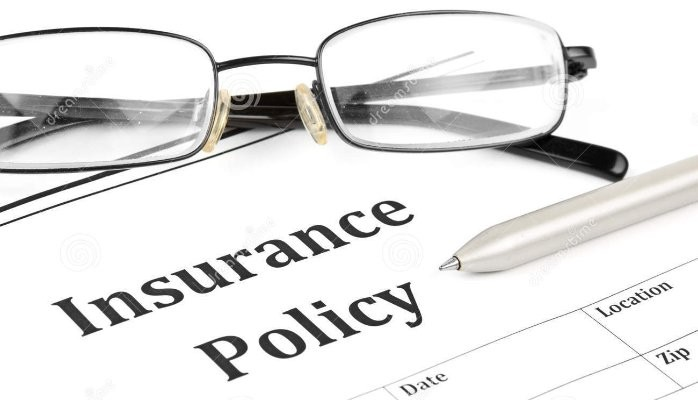Uninsured Motorists: Key Findings and Trends for 2023
Uninsured motorists pose a significant risk on the roadways, with recent auto insurance statistics revealing that over 15.4 percent of drivers nationwide lack coverage. This alarming figure highlights the growing concern of underinsured drivers, who also contribute to the complexities of auto insurance claims. According to the Insurance Research Council’s latest insurance research report, the combined rates of uninsured (UM) and underinsured (UIM) motorists have surged, increasing by 10 percentage points since 2017. Variations in UM and UIM rates across different states reflect a complex interplay of local insurance laws and economic conditions. Understanding these trends is crucial for both drivers and insurers in navigating the evolving landscape of auto insurance.
The issue of drivers operating without adequate insurance coverage is a pressing concern for road safety and liability. Often referred to as uninsured and underinsured motorists, these drivers can create financial challenges for those involved in accidents. Notably, the prevalence of these motorists has been scrutinized through various studies that analyze insurance claim frequencies and legal frameworks across states. The growing rate of underinsured drivers not only complicates the claims process but also raises questions about the effectiveness of current state insurance laws in protecting motorists. As the landscape of auto insurance evolves, understanding the implications of uninsured drivers becomes increasingly important for both policyholders and regulators.
Understanding Uninsured Motorists: Statistics and Trends
In 2023, the prevalence of uninsured motorists (UM) across the United States reached a staggering 15.4 percent, according to a recent report by the Insurance Research Council (IRC). This figure translates to over one in seven drivers lacking proper auto insurance coverage, which is concerning given the nearly universal legal requirements for auto insurance across the nation. The report highlights that the issue of uninsured drivers has been exacerbated by various economic conditions and changes in state insurance laws, making it crucial for drivers to understand the implications of these statistics on their insurance premiums and coverage options.
Furthermore, the data indicates that the problem of uninsured motorists is intertwined with that of underinsured drivers (UIM), as more than one in six drivers (18.0 percent) were deemed underinsured in 2023. This combination of uninsured and underinsured motorists means that approximately one in three drivers (33.4 percent) in the U.S. could potentially leave others at financial risk in the event of an accident. The patterns observed in different states reveal significant variations in UM and UIM rates, suggesting that local economic factors, insurance costs, and state regulations play pivotal roles in shaping these statistics.
The Impact of Economic Conditions on Uninsured Motorists
Economic conditions significantly influence the rates of uninsured motorists, with states experiencing higher unemployment and lower median incomes typically showing elevated UM rates. For instance, states like Mississippi, which had the highest UM rate at 28.2 percent, often struggle with economic challenges that prevent residents from affording auto insurance. This correlation underscores the necessity of considering economic factors when examining auto insurance statistics, as financial stability often dictates a driver’s ability to maintain adequate coverage.
Moreover, the Insurance Research Council’s findings suggest that states with stringent insurance laws and higher minimum coverage limits correlate with lower UM rates. For example, states that mandate uninsured motorist coverage alongside bodily injury liability are likely to see lower rates of uninsured drivers. As economic conditions fluctuate, it is essential for both lawmakers and insurance providers to adapt their strategies to ensure that coverage remains accessible for all drivers, thereby potentially reducing the number of uninsured motorists on the roads.
State Insurance Laws and Their Role in UM and UIM Rates
State insurance laws play a crucial role in determining the prevalence of uninsured and underinsured motorists. Nearly every state mandates that drivers carry some form of auto liability insurance to legally operate a vehicle. However, variations in these laws, such as the absence of requirements for uninsured motorist coverage in certain states, can lead to higher UM rates. The Insurance Research Council’s report emphasizes how states like Florida and Colorado exhibit high rates of both UM and UIM, often due to their specific legislative frameworks that influence how coverage is structured.
Additionally, the introduction of ‘no pay, no play’ laws in many states complicates the landscape for uninsured motorists. These laws prevent uninsured drivers from pursuing non-economic damages in the event of an accident, which may deter some from driving without insurance. As state insurance laws evolve, it is critical for drivers to remain informed about their local regulations and how they impact their coverage options and the overall safety of the driving environment.
The Rising Trends of Underinsured Motorists in the US
In recent years, the trend of underinsured motorists has become increasingly concerning, with the UIM rate reaching 18.0 percent in 2023. This rise suggests that many drivers are inadequately covered and may not be able to compensate for damages in the event of an accident. The Insurance Research Council reports that almost one in five injury-related accidents involves losses exceeding the at-fault driver’s coverage limits, highlighting the potential financial ramifications for victims involved in such incidents.
The correlation between rising UIM rates and economic factors cannot be ignored. States with higher UIM rates often experience economic challenges that lead drivers to opt for lower-cost, inadequate coverage. Furthermore, as UIM claim frequency has increased significantly since the pandemic, it indicates a growing trend where drivers are finding themselves in precarious financial situations, ultimately impacting their ability to secure proper insurance. Addressing these trends requires a multifaceted approach involving legislative changes and educational campaigns to raise awareness about the importance of adequate auto insurance coverage.
Analyzing UM and UIM Claim Frequencies Across States
The analysis of uninsured motorist (UM) and underinsured motorist (UIM) claim frequencies reveals significant disparities across states. The Insurance Research Council’s report shows that claim frequencies offer insights into the landscape of auto insurance in America, where UM claim frequency has surged since the pandemic’s onset. This trend, where UM claims have grown faster than bodily injury claims, suggests a growing prevalence of drivers who are either uninsured or inadequately insured, highlighting the urgent need for effective policy responses.
States with high UM claim frequencies tend to also exhibit elevated UIM claim frequencies. For instance, states like Colorado and Michigan not only have high UIM rates but also experience significant claim activity, underscoring the interconnected nature of these two insurance coverages. Understanding these claim frequencies can help insurers and policymakers develop targeted strategies to address the rising rates of both UM and UIM, ultimately leading to safer highways and better protection for drivers.
Economic Factors Influencing Auto Insurance Coverage
Economic factors such as median income, unemployment rates, and insurance expenditures play a critical role in shaping auto insurance coverage across the United States. States with lower median incomes and higher unemployment rates tend to have higher UM and UIM rates. This correlation suggests that economic hardship can force drivers to forgo comprehensive insurance coverage, which can lead to a rise in uninsured motorists on the roads. For instance, states like Mississippi and Louisiana face significant economic challenges, contributing to their high UM rates.
Conversely, states with healthier economic conditions often report lower UM rates, as residents are more capable of affording the necessary insurance premiums. Additionally, states that offer various financial assistance programs for low-income drivers can help mitigate the issue of uninsured motorists. Understanding the influence of economic factors on insurance coverage is essential for creating effective solutions to reduce the number of uninsured drivers and improve overall road safety.
The Relationship Between Insurance Costs and Coverage Choices
The cost of auto insurance plays a significant role in determining whether drivers opt for adequate coverage or settle for minimum requirements. In states where insurance premiums are high, drivers may choose to reduce their coverage or even drive without insurance altogether. The Insurance Research Council highlights that states with high insurance costs often correlate with elevated UM and UIM rates, as financial constraints lead drivers to seek the cheapest options available, which may not provide sufficient protection.
Moreover, the rise in UIM rates suggests that as premiums increase, particularly for underinsured motorist coverage, more drivers may find themselves unable to afford adequate protection. This trend poses challenges for insurers as they seek to balance the need for affordable premiums while ensuring that drivers are adequately covered. Addressing the relationship between insurance costs and coverage choices is crucial for developing sustainable insurance solutions that protect both consumers and the insurance market.
Legislative Efforts to Reduce Uninsured Motorists
Legislative efforts to address the issue of uninsured motorists are critical in promoting road safety and protecting drivers from financial loss. Nearly all states have enacted laws requiring drivers to carry some form of auto liability insurance, yet enforcement and compliance vary widely. The Insurance Research Council’s findings underscore the need for consistent and effective legislation that not only mandates coverage but also incentivizes responsible driving behaviors. This includes implementing penalties for uninsured drivers and promoting educational campaigns to raise awareness about the importance of maintaining insurance.
Additionally, some states have introduced programs aimed at assisting low-income drivers in obtaining affordable insurance, which can help reduce the prevalence of uninsured motorists. By providing access to necessary resources and information, these legislative measures can help ensure that more drivers comply with insurance requirements. Ultimately, a collaborative approach involving lawmakers, insurers, and community organizations is essential for effectively tackling the challenge of uninsured motorists and improving overall safety on the roads.
Future Trends in Uninsured and Underinsured Motorist Coverage
As we look to the future, the trends surrounding uninsured and underinsured motorists are likely to evolve in response to economic conditions, insurance costs, and legislative changes. With the recent rise in UIM rates signaling potential increases in premiums, drivers may face challenges in affording adequate coverage, leading to a higher risk of being uninsured. Insurers will need to navigate this changing landscape carefully, developing strategies to offer affordable options while ensuring that drivers are adequately protected against potential losses.
Moreover, as awareness of the importance of auto insurance coverage grows, we may see increased advocacy for legislative reforms aimed at reducing the number of uninsured motorists. Such reforms could include stricter penalties for uninsured drivers, enhanced educational efforts about the benefits of insurance, and expanded financial assistance programs for low-income individuals. By addressing these trends proactively, stakeholders can work towards a safer driving environment and a reduction in the number of uninsured and underinsured motorists on the roads.
Frequently Asked Questions
What percentage of drivers are uninsured in the U.S. according to the latest auto insurance statistics?
As of 2023, approximately 15.4 percent of drivers in the U.S. are uninsured, highlighting a significant concern regarding uninsured motorists on the roads.
How do uninsured motorists impact insurance premiums for drivers?
Uninsured motorists contribute to higher insurance premiums for insured drivers as insurers often raise rates to cover the costs associated with accidents involving uninsured or underinsured drivers.
What are the differences between uninsured motorists (UM) and underinsured motorists (UIM)?
Uninsured motorists (UM) are drivers without any auto insurance, while underinsured motorists (UIM) have insurance but not enough coverage to pay for damages in an accident. Both categories can lead to significant financial implications for insured drivers.
How do state insurance laws affect the prevalence of uninsured motorists?
State insurance laws play a crucial role in determining uninsured motorist rates. States that don’t require UIM coverage tend to have higher UM rates, with 14.9 percent reported in such states compared to 11.6 percent in those that do.
What trends have been observed in UM and UIM rates from 2017 to 2023?
From 2017 to 2023, there has been a notable increase in both UM and UIM rates, with the UM rate rising to 15.4 percent and the UIM rate increasing to 18.0 percent, driven by economic factors and changes in state insurance regulations.
Which states have the highest and lowest rates of uninsured motorists?
In 2023, Mississippi had the highest UM rate at 28.2 percent, while Maine reported the lowest at 5.7 percent, indicating significant geographical disparities in uninsured motorist prevalence.
What economic factors contribute to higher uninsured motorist rates?
Higher uninsured motorist rates are often correlated with economic conditions such as lower median incomes, higher unemployment rates, and higher insurance costs, which can make it difficult for drivers to maintain adequate coverage.
How does the pandemic affect uninsured motorist rates?
The pandemic initially led to a decline in UM claim frequency, but from 2020 onward, the UM rate increased steadily, indicating the pandemic’s complex impact on uninsured motorist trends.
What can drivers do to protect themselves from uninsured and underinsured motorists?
To protect against uninsured and underinsured motorists, drivers should consider purchasing UM and UIM coverage as part of their auto insurance policy, which can provide financial protection in the event of an accident.
Where can I find more information on uninsured and underinsured motorists?
For detailed statistics and trends regarding uninsured and underinsured motorists, refer to the Insurance Research Council’s report, “Uninsured and Underinsured Motorists: 2017–2023,” and the Triple-I Backgrounder on Compulsory Auto/Uninsured Motorists.
| Key Points | Details |
|---|---|
| Uninsured Motorists Rate in 2023 | 15.4% of drivers nationally were uninsured. |
| Underinsured Motorists Rate in 2023 | 18.0% of drivers were underinsured. |
| Combined UM and UIM Rates | 33.4% of drivers were either uninsured or underinsured. |
| Increase Since 2017 | 10 percentage point increase in combined rate since 2017. |
| Impact of Pandemic | Steady increase in UM rates post-pandemic. |
| State Variations | UM rates vary significantly across states; highest in Mississippi (28.2%) and lowest in Maine (5.7%). |
| Factors Influencing Rates | Economic conditions, insurance costs, and state laws. |
| Future Implications | Expected increase in UIM premiums, potentially leading to more uninsured drivers. |
Summary
Uninsured motorists continue to pose a significant challenge across the United States, with 15.4% of drivers lacking insurance in 2023. This alarming statistic highlights the need for increased awareness and legislative measures to ensure that all drivers maintain adequate coverage. The rise in both uninsured and underinsured motorist rates indicates a complex interplay of economic factors, state regulations, and the impact of recent events such as the pandemic. As more drivers find themselves inadequately covered, it is crucial for policymakers to address these issues to protect all road users.







